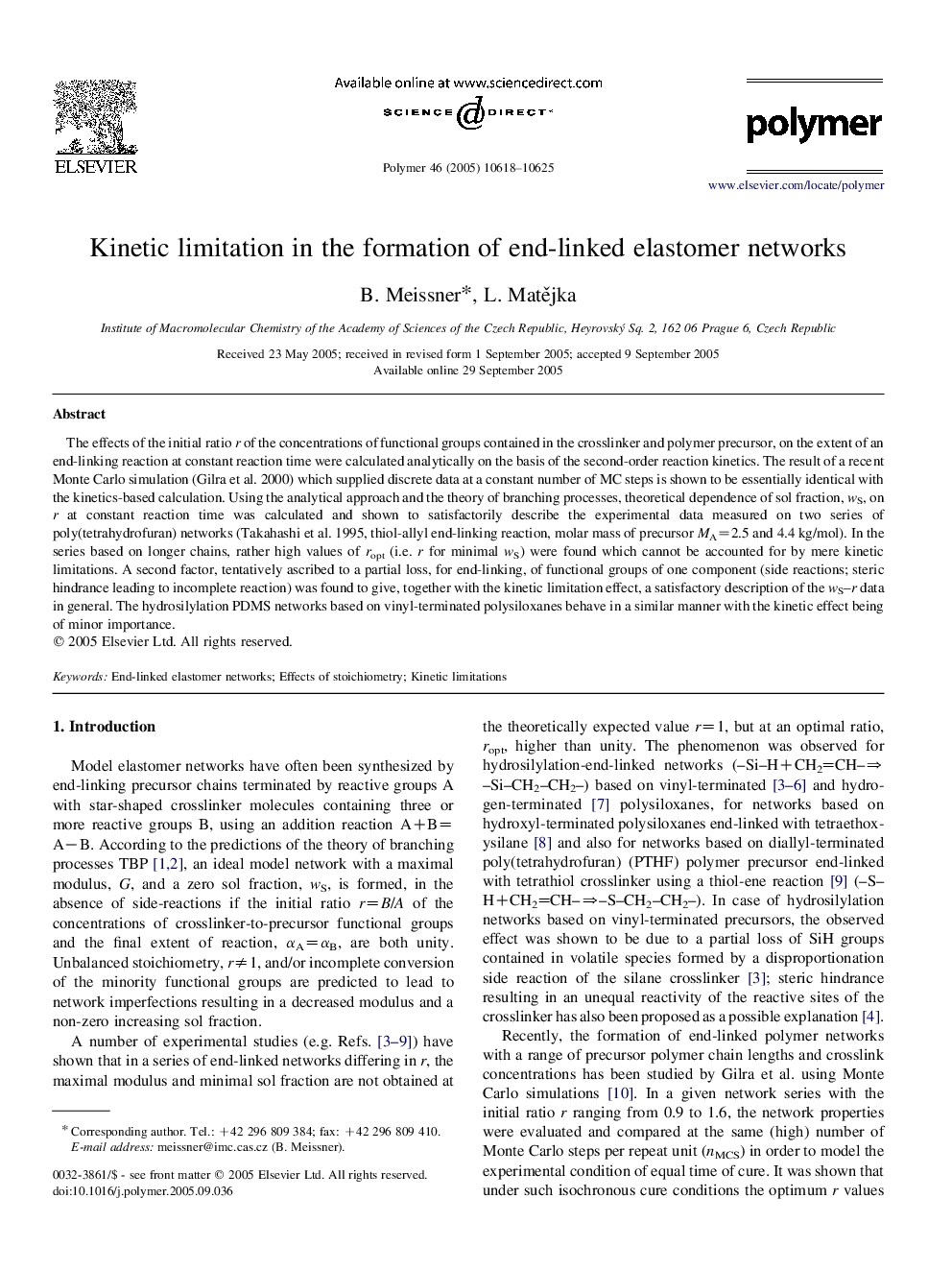| Article ID | Journal | Published Year | Pages | File Type |
|---|---|---|---|---|
| 5186832 | Polymer | 2005 | 8 Pages |
The effects of the initial ratio r of the concentrations of functional groups contained in the crosslinker and polymer precursor, on the extent of an end-linking reaction at constant reaction time were calculated analytically on the basis of the second-order reaction kinetics. The result of a recent Monte Carlo simulation (Gilra et al. 2000) which supplied discrete data at a constant number of MC steps is shown to be essentially identical with the kinetics-based calculation. Using the analytical approach and the theory of branching processes, theoretical dependence of sol fraction, wS, on r at constant reaction time was calculated and shown to satisfactorily describe the experimental data measured on two series of poly(tetrahydrofuran) networks (Takahashi et al. 1995, thiol-allyl end-linking reaction, molar mass of precursor MA=2.5 and 4.4Â kg/mol). In the series based on longer chains, rather high values of ropt (i.e. r for minimal wS) were found which cannot be accounted for by mere kinetic limitations. A second factor, tentatively ascribed to a partial loss, for end-linking, of functional groups of one component (side reactions; steric hindrance leading to incomplete reaction) was found to give, together with the kinetic limitation effect, a satisfactory description of the wS-r data in general. The hydrosilylation PDMS networks based on vinyl-terminated polysiloxanes behave in a similar manner with the kinetic effect being of minor importance.
